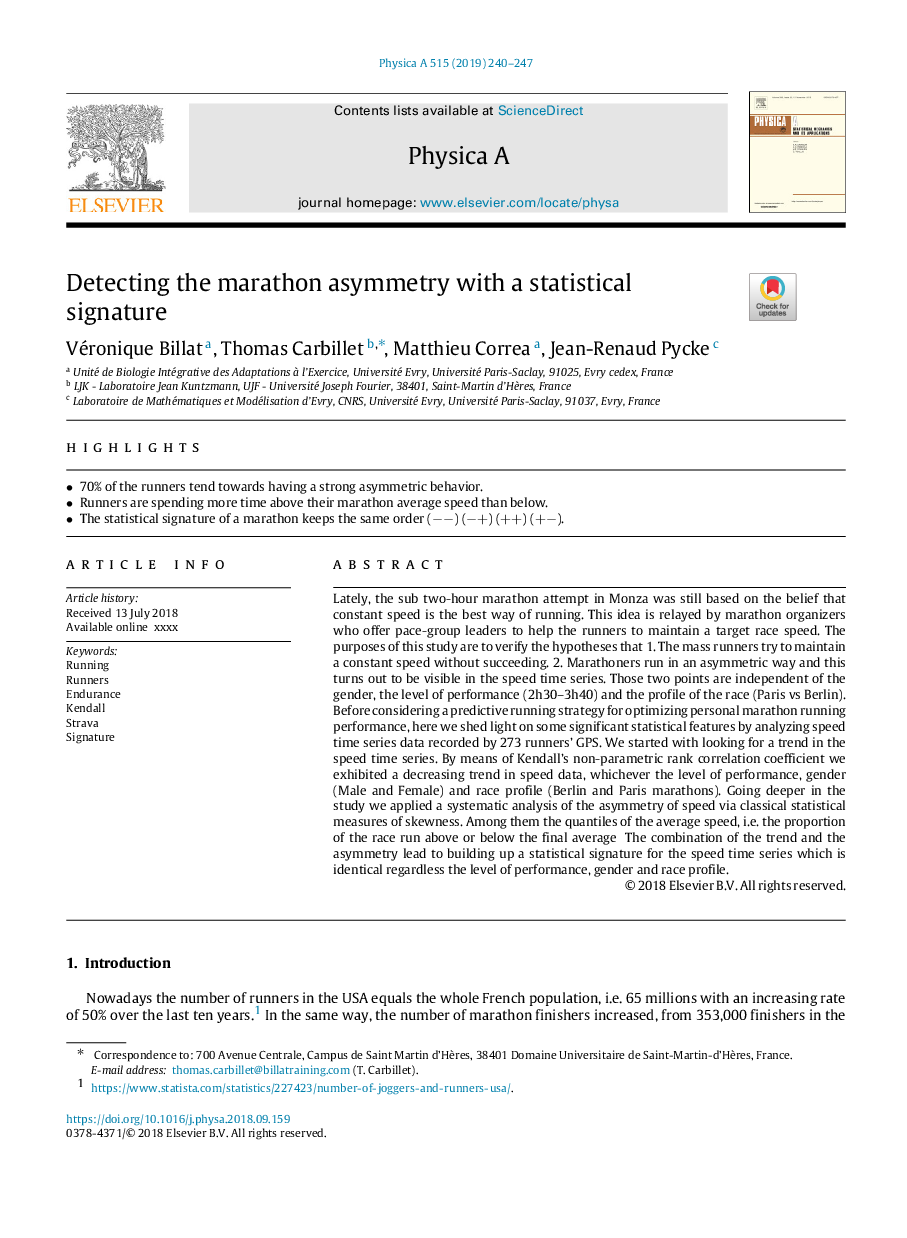| کد مقاله | کد نشریه | سال انتشار | مقاله انگلیسی | نسخه تمام متن |
|---|---|---|---|---|
| 11011976 | 1802609 | 2019 | 8 صفحه PDF | دانلود رایگان |
عنوان انگلیسی مقاله ISI
Detecting the marathon asymmetry with a statistical signature
ترجمه فارسی عنوان
تشخیص عدم تقارن ماراتون با امضای آماری
دانلود مقاله + سفارش ترجمه
دانلود مقاله ISI انگلیسی
رایگان برای ایرانیان
کلمات کلیدی
در حال اجرا دونده تحمل، کندال، استرا، امضا،
موضوعات مرتبط
مهندسی و علوم پایه
ریاضیات
فیزیک ریاضی
چکیده انگلیسی
Lately, the sub two-hour marathon attempt in Monza was still based on the belief that constant speed is the best way of running. This idea is relayed by marathon organizers who offer pace-group leaders to help the runners to maintain a target race speed. The purposes of this study are to verify the hypotheses that 1. The mass runners try to maintain a constant speed without succeeding. 2. Marathoners run in an asymmetric way and this turns out to be visible in the speed time series. Those two points are independent of the gender, the level of performance (2h30-3h40) and the profile of the race (Paris vs Berlin). Before considering a predictive running strategy for optimizing personal marathon running performance, here we shed light on some significant statistical features by analyzing speed time series data recorded by 273 runners' GPS. We started with looking for a trend in the speed time series. By means of Kendall's non-parametric rank correlation coefficient we exhibited a decreasing trend in speed data, whichever the level of performance, gender (Male and Female) and race profile (Berlin and Paris marathons). Going deeper in the study we applied a systematic analysis of the asymmetry of speed via classical statistical measures of skewness. Among them the quantiles of the average speed, i.e. the proportion of the race run above or below the final average The combination of the trend and the asymmetry lead to building up a statistical signature for the speed time series which is identical regardless the level of performance, gender and race profile.
ناشر
Database: Elsevier - ScienceDirect (ساینس دایرکت)
Journal: Physica A: Statistical Mechanics and its Applications - Volume 515, 1 February 2019, Pages 240-247
Journal: Physica A: Statistical Mechanics and its Applications - Volume 515, 1 February 2019, Pages 240-247
نویسندگان
Véronique Billat, Thomas Carbillet, Matthieu Correa, Jean-Renaud Pycke,
